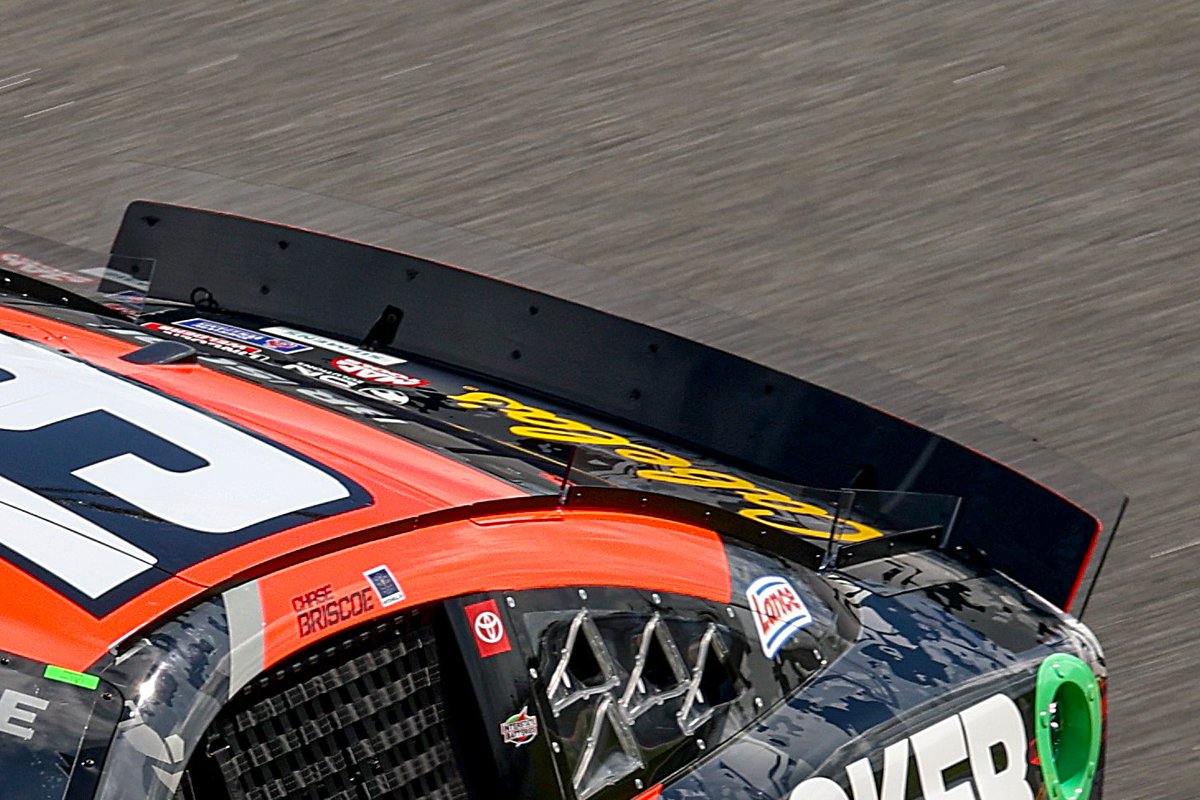It is really nice of @PettyGMS to help their drivers to have a better view of the palm trees outside the track. 

@PettyGMS I do appreciate their creativity here in trying to collect data at the far ends of the spectrum but that's all this is so don't get too excited about seeing skewed cars in race conditions because there is only a tolerance of -/+0.30 degrees for rear steer per the rulebook. 

As I've said in the past, we shouldn't judge what we see in testing as something that we can expect in a race. Teams have a variety of checklists for a test and they are open to try whatever they like to collect data at the far ends because there is no inspection at a test.
My guess is that they're pushing certain measurements past their limits to test sensitivity of said measurements to know how much they can push things when it comes to race setup versus what benefit they might get.
https://twitter.com/rocketrob03/status/1481308389703512064?s=20
This is the latest version of the inspection measurements for the NASCAR Next Gen car per the rulebook. 

An excellent explanation from @TStrunk33 to expand on the description above on why you test certain things at the extremes in a race track environment.
https://twitter.com/TStrunk33/status/1481311609427529740?s=20
@TStrunk33 There are so many easy ways to accomplish that with independent rear suspension. The simplest method is to make adjustments to the rear tie rods which I have circled in red here.

https://twitter.com/rjwilliams_21/status/1481320100443602944

@TStrunk33 That rear toe link connects to the clevis (C) that we see here and can be shimmed in and out using the shims (E) that we see in the illustration. Basically what you would do is run no shims on one side and a full stack on the other. 

We can see how the other side of the toe link (C) connects to the upper control arm (A) in this illustration.
The other option instead of shims to test skew would be to fabricate one long and one short toe link just for testing.
The other option instead of shims to test skew would be to fabricate one long and one short toe link just for testing.

Another interesting perspective here about accomplishing this by shimming the rear clip at an angle.
https://twitter.com/Jalopnik/status/1481345257287548928?s=20
The shims are shown in red here so you could possibly stack more shims on one side to tilt that entire rear clip in a specific direction. 

The question here would be where the centerline is being referenced from and whether it comes from the center of the center section or from the center of the rear clip.
I marked the shim locations here in red.
I marked the shim locations here in red.

Actually shimming that rear clip would probably run afoul of the Wheel Offset formula so this wouldn't pass a technical inspection either.
WHEEL OFFSET = ((RF HALF TREAD+RR HALF TREAD)/2) – ((LF HALF TREAD+LR HALF TREAD)/2)
WHEEL OFFSET = ((RF HALF TREAD+RR HALF TREAD)/2) – ((LF HALF TREAD+LR HALF TREAD)/2)

We're back to the skew being illegal unless there is something else that pops up so I wouldn't pay too much attention to it.
There has been some discussion about the brakes on the stream and Daytona is one of the tracks that gets the Light Duty variant of the brakes because they brakes don't get used as much when compared to other tracks. 

I believe that Daytona, Talladega, and Atlanta are the ones currently assigned to have Light Duty brakes from the last I heard. The details on the pad types for Light Duty and Heavy Duty below. 

It sounds like NASCAR is going to take one car from each OEM from back to R&D so they can re-evaluate the cars since all of the cooling changes that have been made.
• • •
Missing some Tweet in this thread? You can try to
force a refresh













